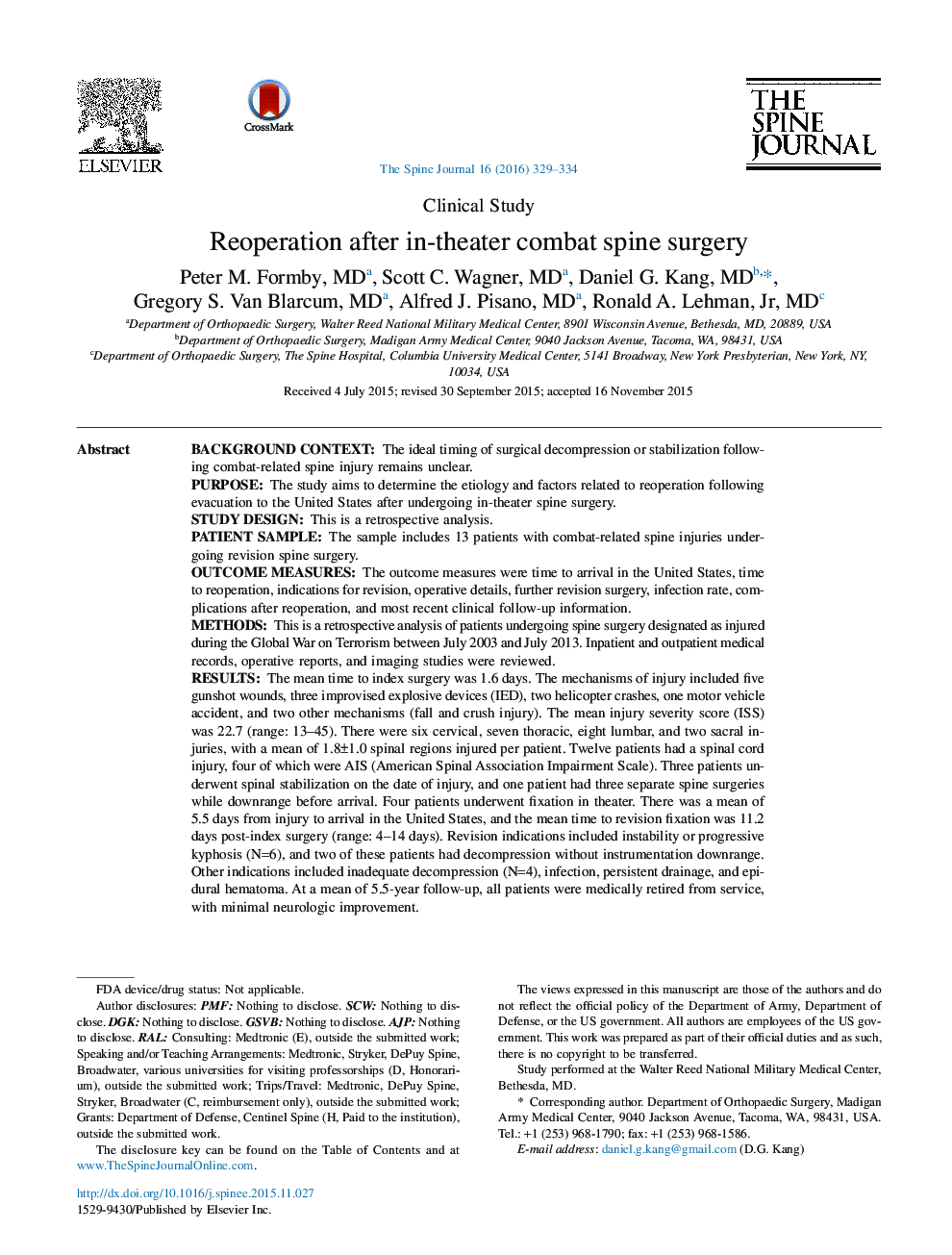| کد مقاله | کد نشریه | سال انتشار | مقاله انگلیسی | نسخه تمام متن |
|---|---|---|---|---|
| 4096291 | 1268556 | 2016 | 6 صفحه PDF | دانلود رایگان |
Background ContextThe ideal timing of surgical decompression or stabilization following combat-related spine injury remains unclear.PurposeThe study aims to determine the etiology and factors related to reoperation following evacuation to the United States after undergoing in-theater spine surgery.Study DesignThis is a retrospective analysis.Patient SampleThe sample includes 13 patients with combat-related spine injuries undergoing revision spine surgery.Outcome MeasuresThe outcome measures were time to arrival in the United States, time to reoperation, indications for revision, operative details, further revision surgery, infection rate, complications after reoperation, and most recent clinical follow-up information.MethodsThis is a retrospective analysis of patients undergoing spine surgery designated as injured during the Global War on Terrorism between July 2003 and July 2013. Inpatient and outpatient medical records, operative reports, and imaging studies were reviewed.ResultsThe mean time to index surgery was 1.6 days. The mechanisms of injury included five gunshot wounds, three improvised explosive devices (IED), two helicopter crashes, one motor vehicle accident, and two other mechanisms (fall and crush injury). The mean injury severity score (ISS) was 22.7 (range: 13–45). There were six cervical, seven thoracic, eight lumbar, and two sacral injuries, with a mean of 1.8±1.0 spinal regions injured per patient. Twelve patients had a spinal cord injury, four of which were AIS (American Spinal Association Impairment Scale). Three patients underwent spinal stabilization on the date of injury, and one patient had three separate spine surgeries while downrange before arrival. Four patients underwent fixation in theater. There was a mean of 5.5 days from injury to arrival in the United States, and the mean time to revision fixation was 11.2 days post-index surgery (range: 4–14 days). Revision indications included instability or progressive kyphosis (N=6), and two of these patients had decompression without instrumentation downrange. Other indications included inadequate decompression (N=4), infection, persistent drainage, and epidural hematoma. At a mean of 5.5-year follow-up, all patients were medically retired from service, with minimal neurologic improvement.ConclusionsOur study found that instability or progressive kyphosis and incomplete decompression were the most common indications for reoperation after evacuation to the United States. Our data provide additional understanding of the potential etiologies of failure and reoperation following in-theater combat spine surgery, and may help avoid such complications.
Journal: The Spine Journal - Volume 16, Issue 3, March 2016, Pages 329–334
